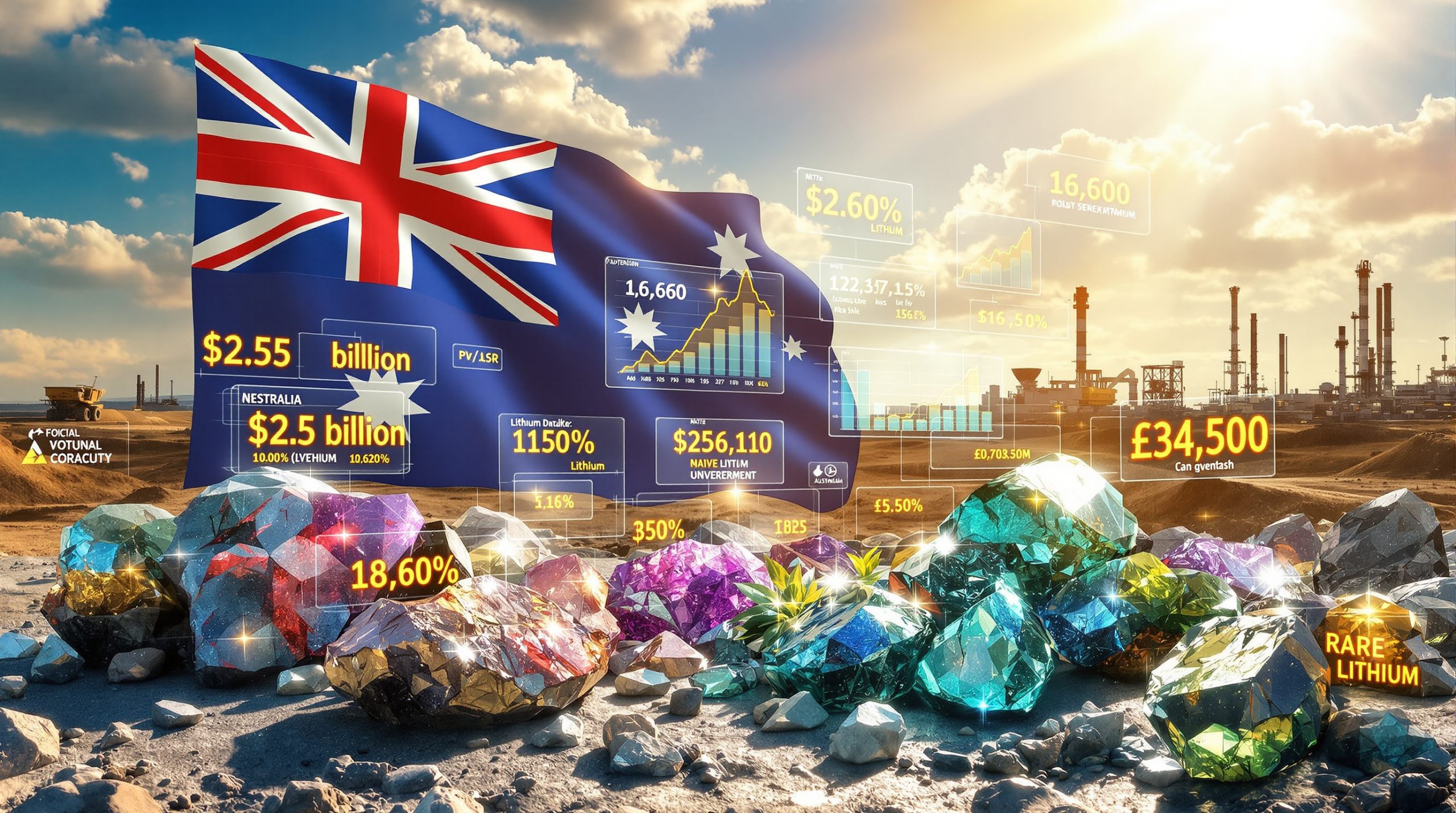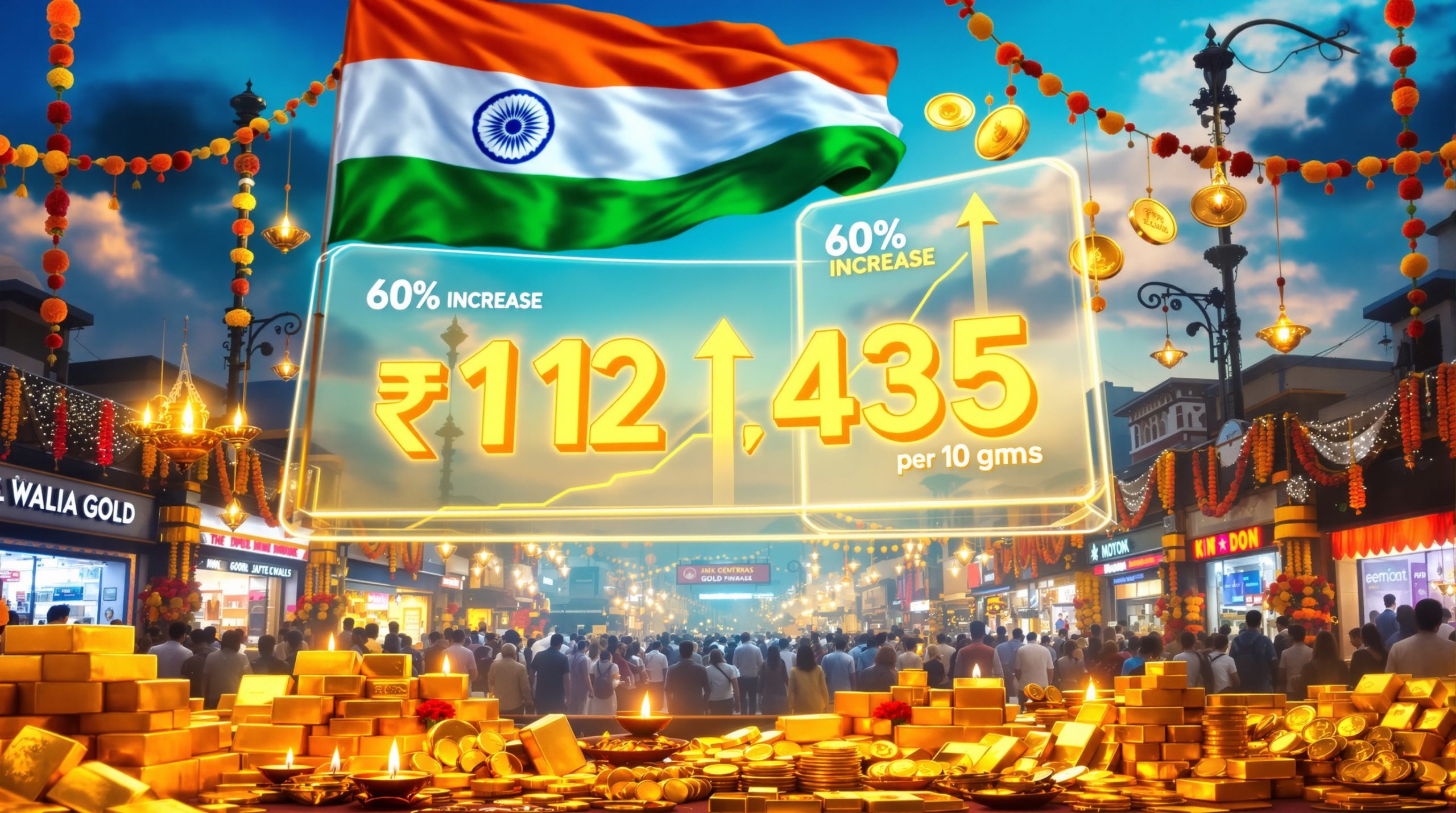What's Driving the Current Precious Metals Rally?
The precious metals market has been experiencing a remarkable surge in 2025, with both silver and gold prices breaking through key resistance levels and establishing new price floors. After a period of market fatigue in June characterized by high intraday volatility, precious metals have entered a healthy consolidation phase that has set the stage for the current rally.
Gold has maintained levels solidly above $3,300 per ounce, creating a strong foundation for further advances. Meanwhile, silver has recently touched $37 per ounce after breaking through previous resistance points, establishing a new support level between $35-36 per ounce. This consolidation is particularly significant as it reflects genuine market strength rather than speculative momentum.
"What we're seeing now is a healthy floor being established for both metals. Gold has found solid support above $3,300, while silver has created a new foundation at $35-36 per ounce. These levels provide confidence for both institutional and retail investors looking to enter the market." — Mark Yaxley, Managing Director at Strategic Wealth Preservation
Multiple Factors Behind the Price Surge
The current precious metals rally isn't being driven by a single catalyst but rather by a convergence of powerful market forces:
Economic and Geopolitical Tensions: The escalation in the Russia-Ukraine conflict, marked by one of the most intense missile operations in recent months, has heightened global uncertainty. This geopolitical instability traditionally drives investors toward safe-haven assets like precious metals.
Trade Policy Uncertainty: The Trump administration has reignited discussions around trade tariffs, sending letters to major trading partners that signal potential policy shifts. These moves have created market uncertainty that typically benefits precious metals as hedges against policy volatility.
Government Spending Patterns: Continued deficit spending by governments worldwide has raised concerns about currency devaluation and future inflation, supporting the investment case for precious metals as monetary alternatives.
Institutional Investment: The first half of 2025 has seen ETFs add approximately 10% to their global net holdings of precious metals, signaling strong institutional confidence in the sector. Family offices and wealth advisors are increasingly directing clients toward physical metal allocations.
Industrial Demand Dynamics: Silver's dual role as both a precious and industrial metal has provided additional price support. Unlike gold, silver sees roughly half of its annual production consumed by industrial applications, creating a consistent baseline of demand regardless of investment sentiment.
Breaking Through Key Price Barriers
The psychological impact of breaking through significant price barriers cannot be understated. Gold maintaining levels above $3,300 represents a critical technical achievement that has historically preceded further advances.
Silver's movement above $37 is particularly notable as it faces less resistance on the path toward $40, a level not seen since the early 2010s. Technical analysts point to the formation of a series of higher lows on silver's weekly chart as evidence of sustained momentum.
Platinum has also experienced a significant resurgence, moving in correlation with silver as industrial demand strengthens. This synchronized movement among industrial precious metals (silver, platinum, and palladium) suggests broad-based confidence in both economic activity and inflation protection.
Most notably, the record gold prices have occurred despite increased selling in the secondary market, where many long-term holders are taking profits. This selling pressure has been more than offset by new demand, indicating robust market depth and sustainability of the current rally.
How Are Silver and Gold Prices Related in This Market?
The relationship between silver and gold prices offers valuable insights into market dynamics and potential future movements. Historically, these two precious metals have maintained a correlated but distinct relationship, with gold typically leading major market moves while silver follows with greater volatility.
Gold's Leadership and Silver's Independence
In the current market cycle, silver initially followed gold's upward trajectory as the yellow metal broke above $3,000 per ounce. However, recent weeks have shown an interesting divergence: while gold has consolidated around the $3,300 level, silver has continued climbing toward the $40 mark.
This divergence highlights silver's growing independence, driven largely by its industrial applications. Unlike gold, which primarily serves investment and jewelry purposes, silver plays a crucial role in manufacturing sectors ranging from electronics to renewable energy.
"Silver isn't just for coins and bars. A significant portion of annual silver production is consumed by industrial manufacturing, creating a baseline demand that supports prices even when investment demand fluctuates." — Mark Yaxley
The current market also displays an interesting correlation between silver, platinum, and palladium—all three metals with significant industrial applications. This synchronized movement suggests that manufacturing demand is playing an increasingly important role in price formation, particularly as green technology sectors continue expanding.
The Gold-to-Silver Ratio Evolution
The gold-to-silver ratio—the number of silver ounces required to purchase one ounce of gold—provides a valuable metric for understanding relative value between these metals. Throughout monetary history, this ratio has fluctuated significantly:
- Ancient times: The ratio was often fixed around 12:1 to 15:1
- 19th century: Average ratio of approximately 15:1 to 16:1
- 20th century: Widened significantly, averaging around 47:1
- 2011 silver peak: Narrowed to approximately 31:1
- March 2020 market crash: Expanded to an extraordinary 125:1
- Current (July 2025): Approximately 89:1 ($3,300 ÷ $37)
The current ratio of 89:1 remains well above historical averages, suggesting silver may be undervalued relative to gold. Many analysts view a narrowing ratio as an indicator of silver's strengthening market position, particularly in periods of economic optimism where industrial demand accelerates.
For investors, the ratio offers strategic insights. When the ratio is historically high (as it remains today), allocating more heavily toward silver might offer greater upside potential. Conversely, when the ratio narrows significantly, rebalancing toward gold could preserve gains.
The ongoing evolution of this relationship bears watching, particularly as industrial demand for silver continues growing through the energy transition and expanding electronics production.
What's Happening in the Physical Precious Metals Market?
While spot prices and ETF holdings capture headlines, the physical precious metals market offers nuanced insights into genuine supply and demand dynamics. Current conditions present a unique set of circumstances for both buyers and sellers of physical metal.
Current Market Dynamics
The recent price surge has triggered increased secondary market flow as long-term holders take advantage of higher prices to realize profits. This phenomenon creates a healthy market cycle where early investors capture gains while new participants establish positions.
"We're seeing a lot of people taking advantage of these relatively high spot prices and selling for profit. This increased secondary market activity has actually helped drive premiums down, creating good opportunities for buyers." — Mark Yaxley
The influx of previously owned products has led many dealers to become "long on inventory," creating buying opportunities for new entrants. Premiums—the amount above spot price charged for physical products—have declined noticeably for many common products, though premium compression varies significantly by product type.
This market dynamic represents a balanced ecosystem where:
- Sellers benefit from historically high spot prices
- Dealers maintain healthy inventory turnover despite compressed margins
- Buyers enjoy lower premiums and greater product selection
Particularly noteworthy is the growing interest from family offices and wealth advisors, who are increasingly directing clients toward physical precious metals allocations. This institutional interest represents a significant shift from previous cycles, where retail investors dominated physical purchasing.
Supply and Demand Factors
Several key factors are influencing the current supply-demand balance in physical precious metals:
Industrial Consumption: Silver's industrial applications continue creating baseline demand regardless of investment sentiment. Approximately 50% of annual silver production goes toward manufacturing, with solar panel production alone consuming over 100 million ounces annually.
Mint Production Constraints: Major national mints have struggled to match demand for sovereign coins, particularly as industrial users compete for the same refined silver. This has created persistent premiums for government-issued products like American Silver Eagles and Canadian Maple Leafs.
Secondary Market Flow: The increased flow of previously owned products has alleviated some supply constraints, particularly for generic silver products like rounds and bars. This secondary supply has been crucial in meeting demand without driving premiums to unsustainable levels.
Product Preferences: Investor preferences have shifted somewhat toward lower-premium products as spot prices have risen. Many buyers are prioritizing maximum metal content over collectibility or brand premiums, leading to stronger demand for generic bars and rounds relative to premium products.
Dealer Inventory Levels: Major dealers report being well-stocked across most product categories, a healthy sign that supply chains have normalized after previous disruptions. This inventory position allows for quick fulfillment of orders and helps maintain reasonable premiums.
For investors looking to enter the physical market, these conditions present favorable opportunities—particularly for those willing to consider secondary market products with lower premiums than new issues.
What Global Events Are Influencing Precious Metals Prices?
Precious metals markets don't exist in isolation—they respond to a complex interplay of global events, economic policies, and market psychology. Understanding these influences provides crucial context for price movements and future projections.
Geopolitical Tensions and Market Impact
The escalation in the Russia-Ukraine conflict has emerged as a significant driver of precious metals demand in recent months. Reports indicate one of the most intense missile operations of the conflict occurring in July 2025, prompting renewed concerns about regional stability and global supply chains.
"The peace that was talked about does not seem to be holding. We're seeing increased defense weaponry flowing to Ukraine, and one of the most intense missile operations recently." — Mark Yaxley
This geopolitical uncertainty benefits precious metals through several mechanisms:
- Safe-haven demand increases during periods of heightened conflict
- Supply disruptions affect mining operations in conflict-adjacent regions
- Currency volatility rises, making precious metals more attractive as stores of value
- Defense spending increases, contributing to government deficits
Simultaneously, trade policy has reemerged as a market concern with the Trump administration initiating new discussions around tariffs and sending formal letters to major trading partners. These actions have revived concerns about supply chain disruptions and inflationary pressures—both traditionally supportive for precious metals prices.
The combination of these geopolitical factors creates a backdrop of uncertainty that typically benefits non-correlated assets like gold and silver, which have historically performed well during periods of international tension.
Inflation Protection and Wealth Preservation
Beyond geopolitical concerns, inflation protection remains a primary driver for precious metals investment. Despite official inflation figures moderating from recent peaks, consumers continue experiencing significant price increases across everyday items.
The disconnect between official inflation statistics and lived experience has driven increased interest in inflation hedges. Mark Yaxley provides a tangible example: "A burger combo meal that used to cost $10 now costs $20 or $30." This kind of real-world price observation resonates more powerfully with investors than abstract CPI figures.
Long-term charts demonstrate precious metals' ability to preserve purchasing power during inflationary periods:
- Gold has maintained its purchasing power over centuries, with an ounce of gold buying approximately the same amount of goods over very long timeframes.
- Silver's industrial applications provide additional inflation protection through increased demand during periods of economic growth.
- Both metals have historically adjusted to the rate of inflation over extended periods, though with significant short-term volatility.
For strategic allocation in an inflationary environment, experts suggest considering:
- Percentage allocation based on total portfolio size and risk tolerance (typically 5-20%)
- Metal mix balancing gold's stability with silver's upside potential
- Product selection focused on liquidity and minimal premiums
- Storage options balancing accessibility with security
This wealth preservation aspect becomes increasingly important as monetary policy continues expanding government balance sheets and concerns about long-term purchasing power persist.
Is $40 Silver Within Reach?
With silver recently touching $37 per ounce, investors and analysts alike are asking whether the $40 threshold is within reach. This psychological barrier represents a significant milestone that could trigger accelerated price movement if breached.
Technical Analysis and Price Projections
From a technical perspective, silver's consolidation patterns suggest further upside potential. The metal has established a series of higher lows on weekly charts while respecting key moving averages—a classic sign of sustainable momentum.
Key technical factors supporting the path to $40 include:
- Strong support established at $35-36 per ounce
- Declining relative strength index (RSI) despite price increases, suggesting room for continued advances
- Bullish cup-and-handle pattern forming on monthly charts
- Volume indicators showing increased participation during price advances
When analyzing historical precedents for similar price movements, the 2010-2011 silver market squeeze provides valuable context. During that period, silver moved from $18 to nearly $50 in approximately 12 months, with the final phase of the rally accelerating dramatically once key psychological barriers were broken.
"I think we'll be close to $40 certainly by the end of this calendar year. The macro factors that got us to $3,300 gold and $37 silver haven't changed—if anything, they've intensified." — Mark Yaxley
This projection aligns with the growing consensus among metals analysts, though opinions vary regarding the timeline and sustainability of such advances. Some technical analysts identify $38.50 as the final significant resistance level before $40, suggesting that breaking through that intermediate barrier could trigger accelerated momentum.
Market Psychology at Key Price Points
The psychological impact of breaking through the $40 barrier shouldn't be underestimated. Round numbers often function as significant psychological thresholds in financial markets, and crossing $40 would represent silver's highest price in over a decade.
Several psychological factors come into play at such milestone prices:
- Media attention increases substantially, bringing new participants to the market
- FOMO (fear of missing out) can drive accelerated buying from retail investors
- Technical buying programs often trigger at round-number thresholds
- Options market gamma can create self-reinforcing price movements near strike prices
Additionally, crossing significant thresholds often changes the narrative around an asset. Rather than being viewed as speculative, higher sustained prices can transform market perception toward viewing an asset as a legitimate portfolio component. This narrative shift has already begun with institutional investors, as evidenced by the approximately 10% increase in ETF holdings during the first half of 2025.
For investors positioning for potential moves toward $40, understanding these psychological factors provides context for what might otherwise appear as irrational price movements around key thresholds.
What Are the Benefits of Professional Precious Metals Storage?
As precious metals prices rise and portfolio allocations increase, secure storage becomes an increasingly important consideration. Professional storage solutions offer several advantages over home storage, particularly for substantial holdings.
Security and Insurance Advantages
The primary benefit of professional storage is comprehensive security—both physical protection and financial assurance through insurance coverage.
"When your metal is in professional storage, it's fully insured. You're not going to lose sleep at night wondering if someone's going to break in." — Mark Yaxley
Professional vaults typically offer:
- 24/7 surveillance with advanced security systems
- Armed guards and multiple access controls
- Purpose-built facilities designed specifically for precious metals storage
- Regular audits verifying holdings and security protocols
The insurance component represents significant value, with coverage included in storage fees. For silver, the annual cost runs approximately 0.75% (75 basis points) of metal value—significantly less expensive than private insurance options for home storage, which often exclude precious metals or charge prohibitive premiums.
This insurance typically covers:
- Theft from any source (internal or external)
- Damage from natural disasters or accidents
- Loss through administrative error or other causes
- Transportation risk when moving metals to or from storage
For substantial holdings, the cost efficiency of professional storage becomes increasingly apparent as private insurance for home storage often becomes prohibitively expensive or unavailable above certain thresholds.
Liquidity and Convenience Benefits
Beyond security, professional storage offers significant advantages in liquidity and portfolio management:
- Buy/sell flexibility: Ability to liquidate portions of holdings without physical transportation
- Digital access: View and manage holdings through secure online platforms
- Transaction efficiency: Execute trades without physical delivery delays
- No assay requirements: Avoid authentication procedures when selling professionally stored metal
These liquidity benefits are particularly valuable during volatile markets, where the ability to quickly adjust positions can significantly impact returns. Professional storage eliminates the logistical challenges of physical transportation and verification that might otherwise delay transactions.
"With professional storage, you can buy and sell at the click of a button. This liquidity aspect is extremely valuable, especially when markets are moving quickly." — Mark Yaxley
Storage options typically include both domestic and international jurisdictions. For North American investors, Toronto and Calgary represent popular domestic choices, offering proximity and regulatory familiarity. Offshore options provide additional benefits through jurisdictional diversification, protecting against country-specific risks.
When evaluating storage providers, investors should consider:
- Company reputation and longevity in the industry
- Insurance details including coverage limits and exclusions
- Segregated vs. allocated storage options
- Fee structure including any hidden costs
- Liquidation procedures and associated timelines
- Auditing protocols verifying holdings
For investors with substantial precious metals holdings, professional storage represents not merely a security solution but a comprehensive approach to portfolio management that enhances both protection and liquidity.
How Should New Investors Approach Precious Metals in Today's Market?
With silver and gold prices at multi-year highs, new investors often struggle with entry strategy. The current market environment presents both opportunities and challenges for those looking to establish precious metals positions.
Strategic Entry Points for New Buyers
For
Want to Know When the Next Major Mineral Discovery Happens?
Stay ahead of the market with Discovery Alert's proprietary Discovery IQ model, which provides instant notifications when significant mineral discoveries are announced on the ASX. Explore how historic discoveries have generated substantial returns by visiting our dedicated discoveries page and start your 30-day free trial today.




